 W
WAura II was a Finnish escort vessel, and a former presidential yacht, operated by the Finnish Navy between 1939 and 1940. The ship participated in the Winter War.
 W
WFabian Wrede class consists of three training ships used by Finnish Navy. The ships are used by the Naval academy of Finland for basic seamanship training, with particular emphasis on navigation in coastal and archipelago waters. The vessels in the class are Fabian Wrede, Wilhelm Carpelan and Axel von Fersen. All ships were built by Uudenkaupungin työvene Oy and commissioned between 2006 and 2008. The ships will replace the old Heikki class training ships.
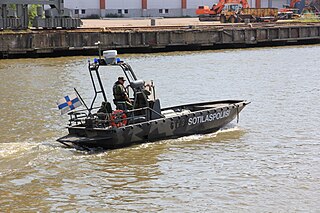 W
WThe G class, or "G-boat" also known as the Marine Alutech Watercat M8 landing craft is a type of vessel in use by the Finnish Navy and the Swedish Navy. The G-boat was originally designed for the Swedish Navy which ordered about 100 of them. It is primarily used for amphibious landings by, and transportation of, marines. It has a very low draught at high speeds which makes it ideal for amphibious assault even in shallow waters. It has a cargo capacity of 8 men or one metric ton.
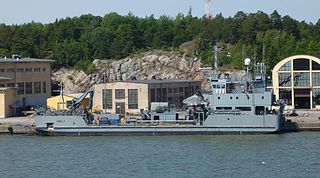 W
WHalli (899) is a modified, enlarged Hylje-design, and acts as a combined pollution cleanup and vehicle transport ship. She is also operated by a civilian crew from the Ministry of Environment but is under Navy control. The vessel can act as a landing ship and logistic support vessel. The 11-metre (36 ft) bow ramp can be used to load or unload vehicles up to 48 tons. As a cleanup vessel, she can sweep a 30-metre (98 ft) path at 1.5 knots with her MacGregor-Navire MacLORI pollution collection system. The vessel is equipped with a 360-cubic-metre (13,000 cu ft) waste-collection tank. The ship was built in 1986 and refitted in 2010.
 W
WHämeenmaa was a gunboat that served in the Finnish Navy during World War II. She was built in 1917. As the ship had changed hands many times during the turbulent last years of World War I she had been renamed many times: In Russian service, she was called Pingvin, later, in German service, her name was Wulf. Finally the Germans handed her over to the Finns in 1920, who renamed her Hämeenmaa. After World War II, she served as a trawler in the Baltic Sea. She was scrapped in 1953.
 W
WHylje (799) is a combined pollution cleanup ship and vehicle transport ship built in 1981 and refitted in 1990–1991. She is operated by a civilian crew from the Ministry of the Environment, but is under Finnish Navy control. The vessel can act as a landing ship and logistic support vessel. The vessel has a capacity to carry 100 tons of deck cargo and its bow ramp can unload vehicles up to 42 tons. The vessel is equipped with oil and oil-slurry collection tanks with a total capacity of 1,410 cubic metres (50,000 cu ft). The vessel can be operated in light ice. Hylje is equipped with a 6-ton crane.
 W
WIlmarinen was a Finnish Navy Panssarilaiva. The unit was constructed at the Crichton-Vulcan shipyard in Turku, Finland, and named after the mythological hero Ilmarinen from the Finnish national epic, the Kalevala. Ilmarinen was the flagship of the Navy from 1 May 1933 until her sinking on 13 September 1941.
 W
WJehu-class landing craft are a class of military transport vessels used by the Finnish Navy. Manufactured by Marine Alutech under the designation Watercat M18 AMC, the boats can perform a multitude of tasks ranging from troop transport and landing operations to patrolling and escort tasks as well as combat and battle support operations. The Jehu-class boats are considerably larger and better armed that the preceding Jurmo-class landing craft.
 W
WThe Jurmo-class landing craft is a type of military transport in use by the Finnish Navy. The manufacturer Marine Alutech designates it as Watercat M12.
 W
WKatanpää-class mine countermeasure vessels are a class of three multipurpose mine countermeasure vessels (MCMV) ordered by the Finnish Navy. The nearly 250 million euro contract was awarded to the Italian shipyard Intermarine S.p.A. in 2006. Initially, all three vessels were scheduled to be delivered by 2014 and the class was expected to achieve operational readiness by 2015, but there have been various delays and the last vessel was handed over to the Finnish Navy in November 2016.
 W
WThe Kiiski class minesweepers are a series of seven small minesweepers of the Finnish Navy. The ships were constructed in 1975 and were modernized in the 1990s.
 W
WThe Kiisla class was a Finnish class of two patrol boats later converted to anti-submarine warfare vessels. The ships were built in 1984 and 1988 at the Hollming shipyard in Rauma, Finland for the Finnish Coast Guard. They were transferred to the Finnish Navy in 2004.
 W
WThe Kuha class minesweepers is a series of six inshore minesweepers of the Finnish Navy. The ships were constructed in 1974-1975. All the vessels of the class were modified and modernized in the late 1990s. This included a lengthening of the hull.
 W
WLouhi is a Finnish multipurpose oil and chemical spill response vessel owned by the Finnish Environment Institute (SYKE), but manned and operated by the Finnish Navy. The ship, ordered in 2007, was built by Uki Workboat in Uusikaupunki, Finland, and entered service in May 2011.
 W
WThe Nuoli-class motor gunboats was a series of thirteen fast attack craft of the Finnish Navy. The ships were constructed in 1961 by Oy Laivateollisuus Ab in Turku, and modernized in 1979. The Nuoli motor gunboats played a very important role in naval training and were in service until the early 90s.
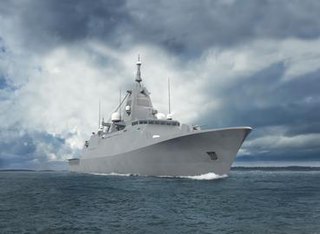 W
WPohjanmaa class is a series of four multi-role corvettes currently under development for the Finnish Navy as part of the Squadron 2020 project. Together with the existing four Hamina-class missile boats, the four new surface combatants will form the backbone of the Finnish Navy from the mid-2020s onwards. They will replace seven older vessels that have been or are due to be decommissioned: the minelayer Pohjanmaa, two Hämeenmaa-class minelayers and four Rauma-class missile boats.
 W
WThe R-class patrol boats was a class of Finnish patrol boats, originally constructed as coastal minesweepers. They were modified into patrol boats by the end of the 1960s and transferred to the Patrol Flotilla and later to the 7th Missile Flotilla. They were then used for sea patrol and as anti-submarine warfare vessels. They were stricken from the Finnish Navy list in the 1990s. The three later vessels, Ruissalo, Raisio and Röyttä, were somewhat larger and the vessels are therefore sometimes referred to as the Rihtniemi and Ruissalo classes. However, the Finnish Navy used the designation R class for all five vessels.
 W
WThe Ruotsinsalmi-class minelayers were a two-strong class of minelayers in the Finnish Navy.
 W
WSisu was a Finnish state-owned icebreaker. Built in 1939 at Wärtsilä Hietalahti Shipyard in Helsinki, she was one of the world's first diesel-electric icebreakers. In addition to icebreaking duties, she served as a submarine tender for the Finnish Navy during the summer months until the end of the Continuation War.
 W
WSuomen Joutsen is a steel-hulled full-rigged ship with three square rigged masts. Built in 1902 by Chantiers de Penhoët in St. Nazaire, France, as Laënnec, the ship served two French owners before she was sold to German interest in 1922 and renamed Oldenburg. In 1930, she was acquired by the Government of Finland, refitted to serve as a school ship for the Finnish Navy and given her current name. Suomen Joutsen made eight long international voyages before the Second World War and later served in various support and supply roles during the war. From 1961 on she served as a stationary seamen's school for the Finnish Merchant Navy. In 1991, Suomen Joutsen was donated to the city of Turku and became a museum ship moored next to Forum Marinum.
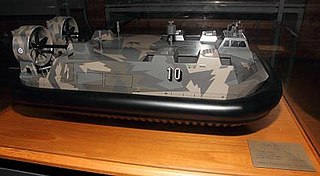 W
WTuuli was a hovercraft built for the Finnish Navy. Originally intended to be the lead vessel of a class of four combat hovercraft, she was never officially commissioned and after having been laid up for the most of her career, she was broken up in 2013.
 W
WThe Uisko class, also known as the Marine Alutech Watercat M11 landing craft is a type of vessel in use by the Finnish Navy. It is the predecessor of the Jurmo class landing craft. Uisko was the first water jet vessel of the Finnish Navy. It features excellent maneuverability and low draft suitable for shallow waters. It can be used for amphibious assault and transport of marine infantry. The uisko has a cargo capacity of 2.5 tons.
 W
WSS Ukkopekka is a Finnish steamship in service as a tourist and heritage attraction.
 W
WVäinämöinen was a Finnish coastal defence ship, the sister ship of the Finnish Navy's flagship Ilmarinen and also the first ship of her class. She was built at the Crichton-Vulcan shipyard in Turku and was launched in 1932. Following the end of the Continuation War, Väinämöinen was handed over to the Soviet Union as war reparations and renamed Vyborg. The ship remained in Soviet hands until her scrapping in 1966.
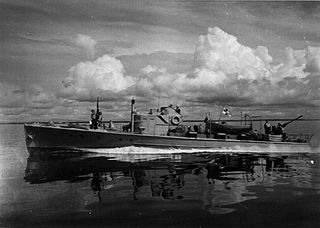 W
WVMV-class patrol boat was a series of Finnish patrol boats, which served with the Finnish Coast Guard and the Finnish Navy during World War II.